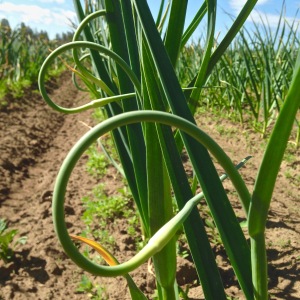
Farmland begins as an open canvas; it’s identity ultimately forged by the values of those tending the fields. The practical minded farmer approaches their land as a capital resource, and is managed to efficiently meet the demands of prominent crop markets. This form of agriculture is built as an economy of scale and supplies our export markets, feeds livestock and supplies the majority of food to wholesalers around the nation. A more romantic approach to farming, from the naturalist, tends to view land, not as a resource, but as an organism. Yes, the economics of running a business are major consideration, but are almost subservient to the goal of fostering a complete ecosystem. Oftentimes products from these farms are more diverse, but created at a much smaller scale than their commercial cousins. Food from these operations is often grown to sell at local farmers markets or directly to select restaurants. In between these two distal ends of agriculture exits a rich nexus of farms varying in scale, scope and long term goals.
When Audrey Tehan first approached food it was through a different vein. Her primary mission is neither economic or ecological; instead, the focus of Seed to Table, her creation, is community, and how to build a stronger one. The hard work of a well-intentioned farmer can be lost in a world of priority if their surrounding community cannot afford or understand what is grown around them. For many, it is hard to rationalize buying local food when the prices are higher and seasons dictate what is available. Without a local community who embraces and understands the real challenges of farming, it is difficult for such an industry to thrive. To approach that very challenge. Audrey and Seed to Table founded three guiding principals, around which the operation runs.
The first goal is Access. Local food is often accompanied by the stigma that it is a luxury good; ‘people who have the money can afford to buy on principal, the rest of us have to do what makes sense’. Seed to Table works hard to break this pre-conception. They are one of the only farms that I have ever encountered that lists food bank donations and discount farmers markets as prominent avenues to share their produce. To them, the only way to get more food grown in Sisters and in Central Oregon, is if more people get their hands on local produce and develop an appreciation for the value of wholesome ingredients. Most any farm is left with unsold produce in the field, due to either lackluster demand, or physical blemishes. There is really no sense in allowing this valuable crop go to waste. This is why Seed to Table works with food banks; to turn waste into a community asset, for the good of the community.
The second goal is Education. People inherently become more invested in what they learn, and education through experience cultivates that knowledge as a sense of identity. For years now there has been much prosthletizing as how we, as a culture, allowed our food system to become an industrial entity? A powerful answer to this question is that we, as a culture, have disconnected from food production as a piece of our identity. Audrey drove to use Seed to Table as a medium to rebuild that identity by starting up a Farming class in Sisters highschool. The curriculum for the course balances components of economics, soil science, biology and turning compost. The intention is not to make a farmer out of every student. Rather, the goal to instil a foundation of knowledge for subjects like soil science, environmental science, biology, and nutition, so that students and parents may better understand the complexity of what they put in their body. Since classrooms can feel a little stuffy, Seed to Table also makes sure that their curriculem gets people outside with their hands in the dirt and show them what all of this information looks like in real life.
The third goal is to Expand the amount of fresh fruits and vegetables sold in Sisters, which arises naturally though the success of education and access. As their classes grow and more interns flock to learn through work, the ability of Seed to Table to supply school lunch programs, food banks and farmers markets grows as well. Ideally, their efforts in education, outreach and community development will open up some opportunity for neighboring farms, like Mahonia Gardens or Radicle Roots, as well.
There are a lot of farms that are closed enterprises. They have land, employees, crops and market stands; but most people can only approach them as a customer. And there exists a void where you can’t quite understand what it is that goes on at a farm. At that point, how are you to make out the difference between their Broccoli and Broccoli in the grocery store that was grown 500 miles away?
It is really a beautiful sight to watch the three goals of Seed to Table come into confluence and break down that void. The doors there are open, the customer, the community, is their farm. Summer workers are young interns out on a break from school, there to learn with their hands. As summer turns to fall, the interns are replaced with buzzing energy generated by droves of students from Sister’s Elementary. There they are out in the field, helping harvest winter squash, while learning how to store and cure produce for the winter. All the while, the squash and kale they pluck from the field is taken over to the food shelf to supply a hot stew as the days turn colder. For them, every step in the farming process is met with the smiling face of someone who just became more than a consumer. They might not be trying to make a farmer out of everyone they teach, but a little bit of the farm has a way of rubbing off once you experience it.








































 Traditionally the scapes have been discarded post harvest due to nonexistent demand. However, as the dialogue between farmer and shopper got more face time, people began to learn more about this part of the plant and its culinary value. Now armed with more information, consumers have come to value this hyper seasonal crop. The subsequent demand for garlic scapes has spread beyond farmers market, and now proliferates in the produce aisle of larger grocery stores. It is a development that benefits both farmers and households alike: farmers can make money from what was once considered waste, and chefs can have a new flavor to add to their meals. A market development, such as the newfound demand for garlic scapes, allows farmers to get more out of their fields by using more than one part of a crop. It is very important that we strive for efficient use of farm resources since this is an industry that demands 80% of fresh water consumption and accounts for 50% of land use
Traditionally the scapes have been discarded post harvest due to nonexistent demand. However, as the dialogue between farmer and shopper got more face time, people began to learn more about this part of the plant and its culinary value. Now armed with more information, consumers have come to value this hyper seasonal crop. The subsequent demand for garlic scapes has spread beyond farmers market, and now proliferates in the produce aisle of larger grocery stores. It is a development that benefits both farmers and households alike: farmers can make money from what was once considered waste, and chefs can have a new flavor to add to their meals. A market development, such as the newfound demand for garlic scapes, allows farmers to get more out of their fields by using more than one part of a crop. It is very important that we strive for efficient use of farm resources since this is an industry that demands 80% of fresh water consumption and accounts for 50% of land use













































